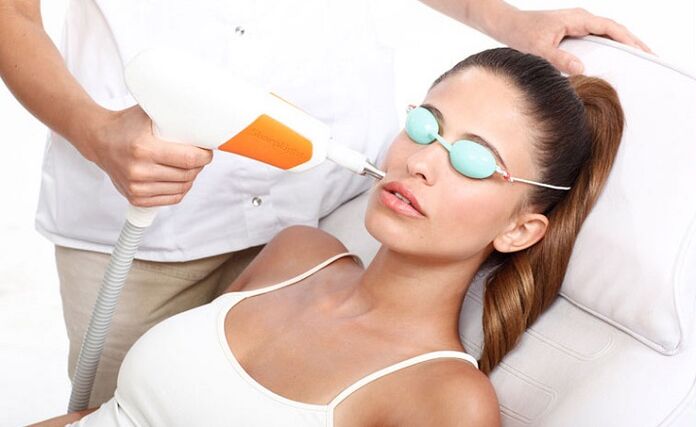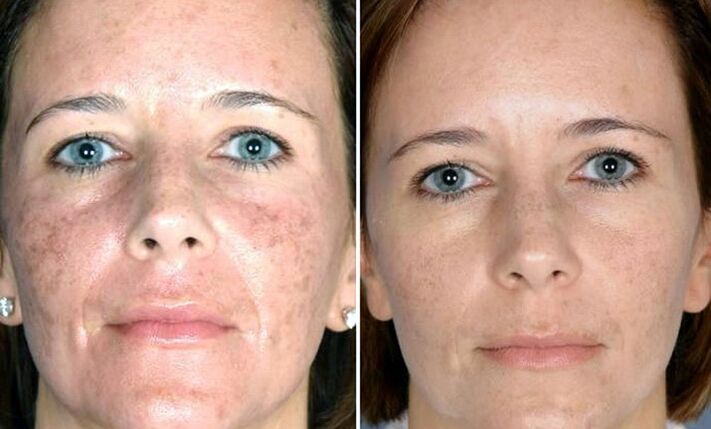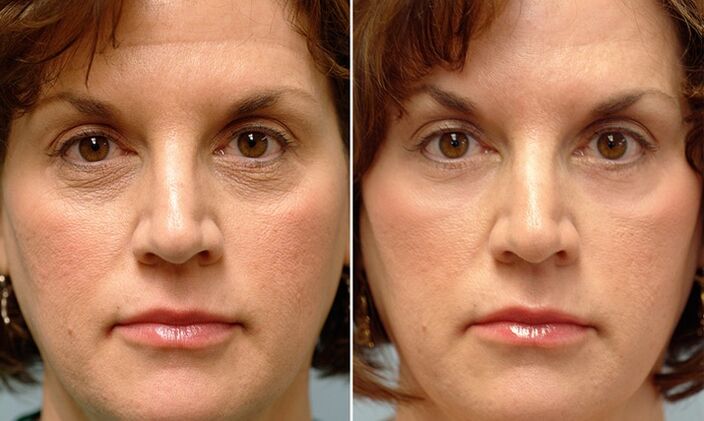From the time of Cleopatra to the present, there is not a single representative of the fair sex who does not want to prolong the youth and beauty of her skin. Modern medical science never ceases to amaze us with innovations in the field of cosmetology, offering various anti-aging surgeries and procedures.
Especially popular are techniques that allow you to get rid of the external signs of aging without resorting to a scalpel or Botox injections. Fractional laser resurfacing is practically the fastest and safest way to combat skin aging today.

What is a fractional laser and how does it "rejuvenate"?
When the laser hits the skin, it causes a burn that spreads in depth. Active healing (regeneration) processes begin, providing the desired cosmetic effect. This procedure is also known in cosmetology as laser skin resurfacing.
If the same laser is divided into many microbeams, the so-called fractional laser beam is obtained. This ray will no longer act on the skin as a complete spot, but as an intermittent microgrid. Burns after fractional laser thermolysis are located as a large number of microdots between intact skin. This significantly reduces the trauma of the procedure (and also the pain) and allows the skin to heal faster.
After exposure to the laser, intact healthy skin cells begin to actively divide, with the formation of collagen and elastin, which provide elasticity and a youthful appearance to the skin.
Fractional photothermolysis varieties.
Ablative
Under the action of laser radiation, water evaporates from the tissues and an "open" microscopic wound is formed, around which are damaged (burned) cells.
In the course of healing, a pronounced lifting effect occurs, but there is a danger that the infection will penetrate into the deep layers of the skin.
Non ablative
Radiation is used, which leaves the epidermis intact, so that evaporation of the tissues and the formation of an "open" wound does not occur. The burn forms and heals under the epidermis, so there is no risk of infection, but the rejuvenating effect of this procedure is less pronounced.
The cosmetologist selects the fractional rejuvenation method individually, depending on the condition and type of skin.
Effects and benefits of fractional laser thermolysis
The main difference between the technique and all other procedures is the optimal balance between safety and efficacy.
Main advantages:
- the ability to affect any part of the body (including cleavage, neck, eyelids);
- a wide range of indications;
- physiology (the area of damage is only 20% of the entire area treated with laser);
- short healing period (2-7 days);
- anesthesia method - application;
- the possibility of using it in people with dark skin (since it does not cause hyperpigmentation);
- the duration of the result (from one year to several years).
The downside is insufficient knowledge of all aspects of the effect of a fractional laser, since the technology itself has appeared recently.
Indications for fractional rejuvenation:
- wrinkles (of any depth and location);
- decreased elastic properties of the skin;
- enlarged pores;
- pigmentation;
- acne;
- spider veins;
- scars (postoperative, residual after acne);
- stretch marks (stretch marks), including on the skin of the mammary glands.
Characteristics of performing fractional laser thermolysis.
A few days before the photothermolysis procedure, the cosmetologist may prescribe (if indicated) antibacterial or antiviral drugs in prophylactic doses.
On the day of fractional rejuvenation, it is necessary to completely exclude physical activity, smoking and alcohol consumption.
Before the procedure, the skin is thoroughly cleansed and treated with a special numbing cream. In some cases, no anesthesia is required at all.
The effect of the laser feels like "tingling" or "tingling. "The duration of the procedure (from several minutes to an hour) and their number are selected individually. After the laser treatment, a soothing nourishing cream is applied to the skin.
Follow-up skin care:
- Moisturize the skin with a special cream 2-3 times a day (within 2 weeks);
- protect the skin from UV radiation for 2 months (do not visit the solarium, use sunscreen with a protection factor of at least 30);
- do not use peels or scrubs (within 2 weeks);
- do not use cosmetics containing salicylic acid and retinol (within 2 weeks);
- do not wear compression underwear for several days (if fractional photothermolysis was performed on the body);
- Limit (exclude) smoking and alcohol throughout the course of treatment (reduce the regenerative functions of the skin).

On average, the rehabilitation period lasts up to 3 days after nonablative fractional laser thermolysis and up to 7 days after ablative thermolysis.
Changes in the skin after the procedure.
For 1-3 days after intense laser exposure, redness, discomfort and slight swelling of the skin may persist. If this condition is subjectively poorly tolerated, then it is permissible to use pain relievers and skin cooling.

After a few days, a tanned skin tone (tanning effect) may appear, which lasts up to 2 weeks and disappears on its own. Within 5-7 days after fractional rejuvenation, dryness and peeling of the skin is noticed.
Undesirable consequences and contraindications of photothermolysis.
With improper skin care after the procedure, non-compliance with recommendations or technical errors during laser treatment, the following complications are possible:
- redness of the skin that lasts more than 3 days;
- edema at the site of exposure, lasting more than 2 days;
- exacerbation of herpes infection (if previously in the treatment area);
- infection (appearance of streptoderma);
- erosion, burns in the affected area;
- detect bleeding;
- hyperpigmentation.
To avoid undesirable consequences, the fractional laser resurfacing procedure is carried out after the examination and the exclusion of possible contraindications.
Absolute contraindications:
- pregnancy and lactation;
- tendency to form keloid scars;
- acute infectious process (including herpes);
- oncological pathology;
- condition after radiation, chemotherapy;
- epilepsy;
- major disorders of the immune system;
- taking medications that contain retinoids;
- psoriasis (atopic dermatitis) during an exacerbation.
Relative:
- kidney pathology;
- diabetes;
- inflammation at the site of exposure;
- the unwillingness of the patient to follow the recommendations of the cosmetologist;
- Mental illness;
- allergy to anesthetic;
- Autoimmune diseases;
- fresh tan (visit to the solarium in the last month);
- Recent rejuvenation procedures (affecting the deep layers of the skin, in the last three months, superficial, within 10 days).
Fractional laser resurfacing reviews and "before" and "after" series patient photos generally detract from the effectiveness and low trauma of this youth-preserving method.

Remember!The procedure can only be performed by specialists (surgeon or dermatovenerologist) who have been trained and have permission to work with laser devices. The competence of a doctor is the key to your beauty!
















































































